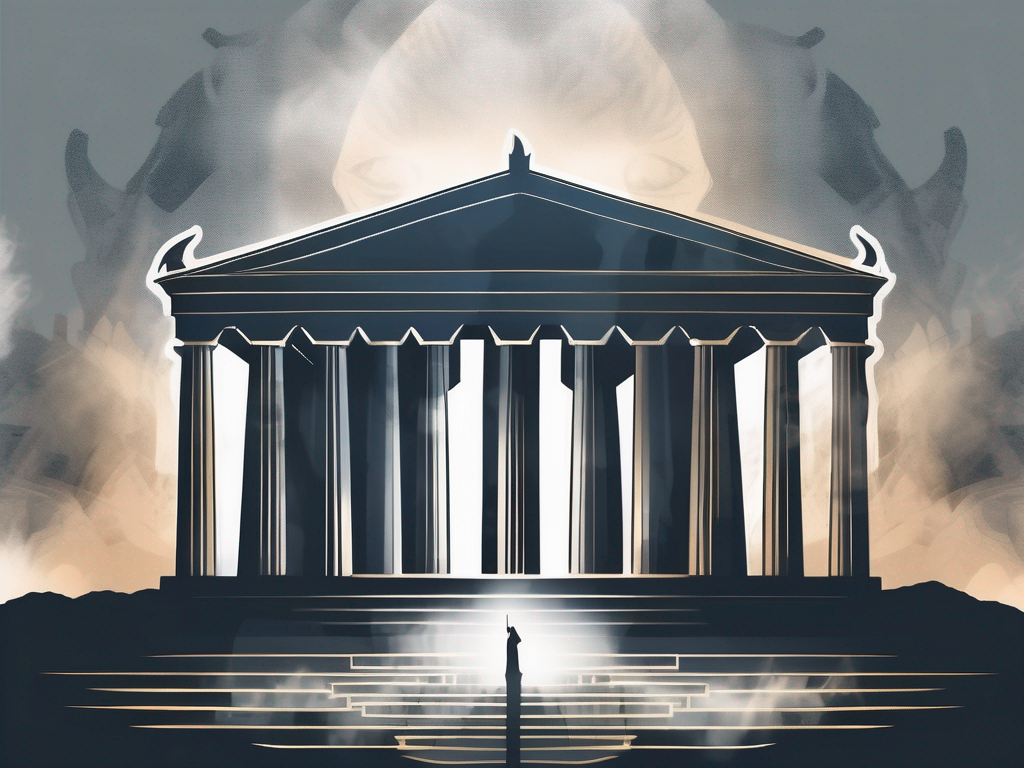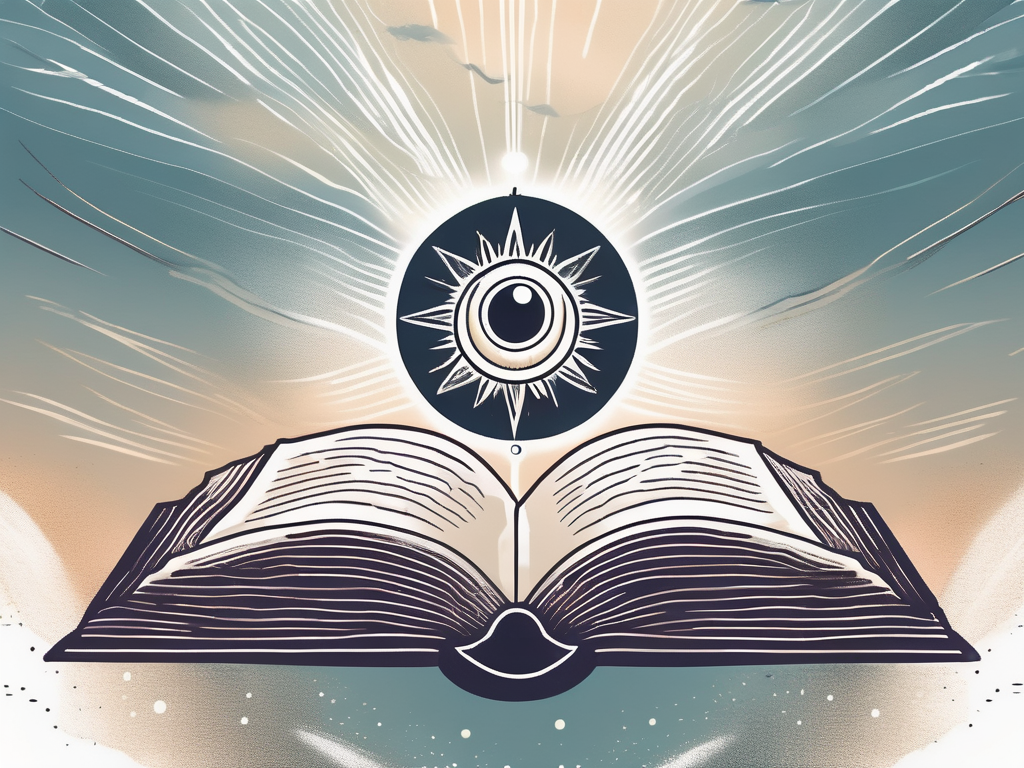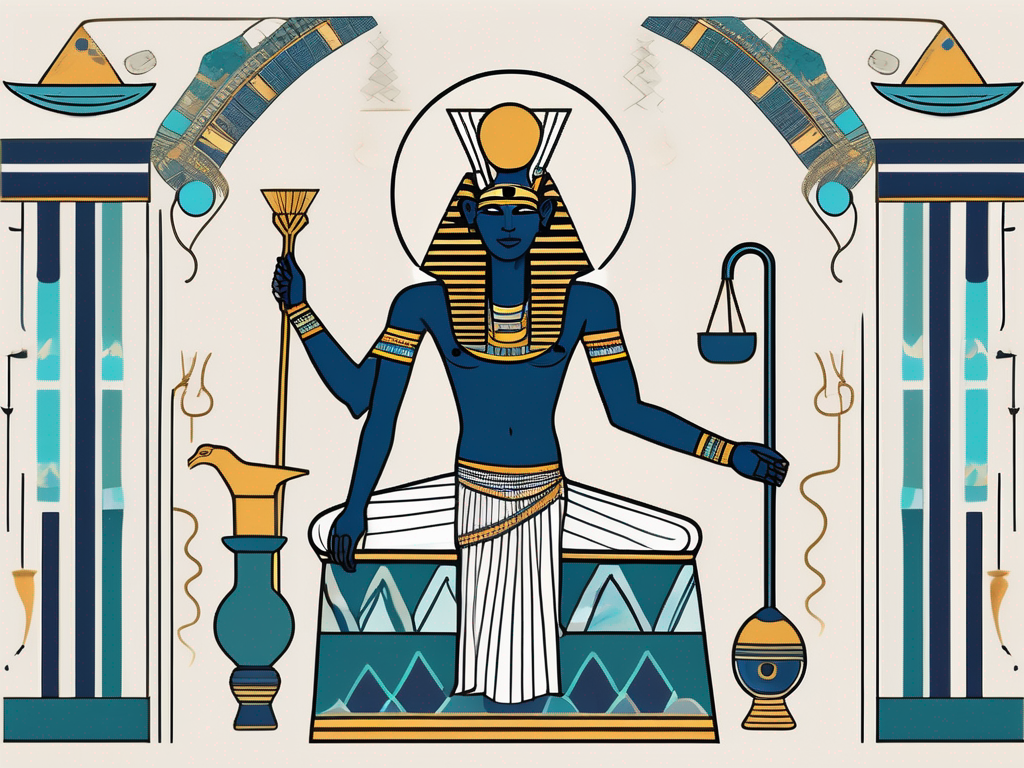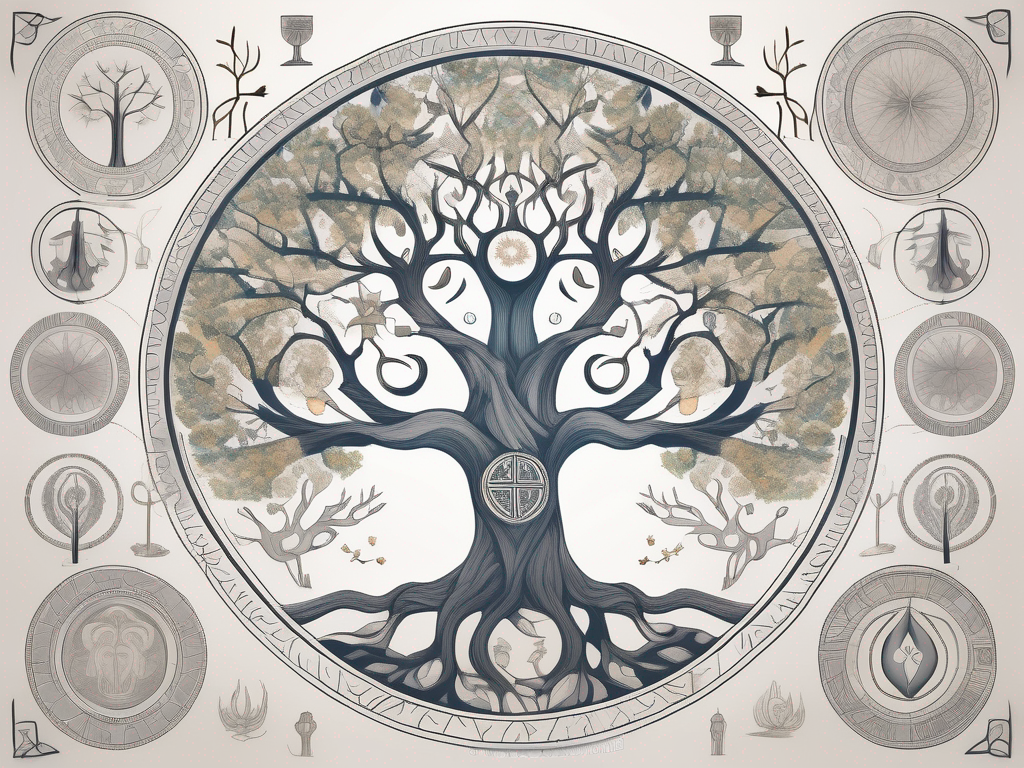Egyptian mythology is filled with fascinating gods and goddesses, each with their own unique stories and representations. One such deity is Nu, a figure often associated with the primordial waters and considered to be the embodiment of chaos and infinite potential. In this article, we will dive deep into the enigmatic world of Nu, unraveling the mysteries surrounding this ancient Egyptian god.
Understanding the Concept of Nu
Nu, also known as Nun or Nunu, is an intriguing deity whose significance goes beyond what meets the eye. In Egyptian mythology, Nu is often depicted as a vast expanse of water stretching out to infinity, representing both the abyssal depths and the boundless possibilities of creation. This concept of Nu encompasses both the chaotic waters that predated the universe and the source from which all life arises.
Imagining the vast expanse of Nu’s waters, one can’t help but be captivated by the mystery and awe it evokes. The ancient Egyptians believed that within these waters lay the secrets of the universe, waiting to be discovered by those who dared to explore its depths. It was a realm of endless potential, where the boundaries of reality seemed to dissolve, giving rise to new possibilities.
As the embodiment of the primordial waters, Nu held a unique position in Egyptian mythology. It was not merely a passive entity but an active force that played a vital role in the creation of the world. Nu was the canvas upon which the tapestry of existence was woven, the catalyst that set the wheels of creation in motion.
The Role of Nu in Egyptian Mythology
Within the realm of Egyptian myth, Nu plays a vital role in the creation narrative. It is believed that Nu existed before anything else, and from these primordial waters, the world came into being. Nu can be seen as the catalyst for creation, as it gave birth to Atum, the first god, who then brought forth the rest of the Egyptian pantheon.
Imagine the moment when Nu’s waters stirred with the energy of creation, a cosmic dance that set the stage for the birth of the gods. From the depths of Nu emerged Atum, the self-created god who stood as the embodiment of divine power. With each step Atum took, the universe unfolded, with celestial bodies forming and life sprouting forth.
Nu’s role in the creation narrative highlights its significance as the source of all life. It is a reminder that even in the vastness of the cosmos, there is a singular origin from which everything springs forth. Nu’s waters, once chaotic and formless, became the cradle of existence, nurturing the gods and mortals alike.
Nu’s Association with the Primordial Waters
The association between Nu and the primordial waters is deeply ingrained in Egyptian culture. The ancient Egyptians recognized the importance of these waters as the source of life, fertility, and rejuvenation. Nu represented the eternal cycle of creation, destruction, and rebirth, reminding the people of the ever-changing nature of existence.
Picture the Nile River, winding its way through the Egyptian landscape, carrying the life-giving waters of Nu. The annual flooding of the Nile was seen as a divine event, a manifestation of Nu’s power to bring fertility to the land. The Egyptians celebrated this cycle of inundation and recession, knowing that it was a testament to the eternal rhythm of creation and renewal.
Furthermore, Nu’s association with the primordial waters extended beyond the physical realm. It was believed that the waters of Nu had a purifying effect on the soul, washing away impurities and granting spiritual rejuvenation. The act of bathing in these sacred waters was seen as a form of spiritual purification, a way to connect with the divine essence that flowed through all things.
In conclusion, Nu’s significance in Egyptian mythology cannot be overstated. It represents the vast expanse of the primordial waters, the catalyst for creation, and the eternal cycle of life and rebirth. Nu’s waters hold the secrets of the universe, waiting to be explored and understood. It is a reminder of the boundless possibilities that lie within the depths of our existence.
The Symbolism of Nu
To further understand Nu’s significance, we must explore the various symbols and representations associated with this enigmatic deity.
Nu, the ancient Egyptian god of the primordial waters, holds a profound symbolism that resonates throughout the rich tapestry of Egyptian mythology. The hieroglyphs that depict Nu consist of rippling waves and flowing water, capturing the essence of the deity. These symbols not only represent the primordial waters from which Nu emerged but also symbolize the chaotic forces of creation and the eternal cycle of life.
As we delve deeper into the symbolism of Nu, we find that the rippling waves and flowing water also embody the concept of duality. Nu represents both the calm and turbulent aspects of water, reflecting the ever-changing nature of existence. This duality is further emphasized by the contrasting depictions of Nu in ancient Egyptian art and sculpture.
The Hieroglyphs and Their Meanings
The hieroglyphs depicting Nu are a testament to the ancient Egyptians’ profound understanding of the natural world. The rippling waves and flowing water symbolize not only the physical properties of water but also its spiritual and metaphysical aspects. Nu’s hieroglyphs serve as a visual representation of the divine power that lies within the waters, a power that encompasses the creation and sustenance of life itself.
Moreover, the hieroglyphs of Nu also convey the concept of time and eternity. The eternal cycle of life, death, and rebirth finds its embodiment in the flowing waters of Nu. Just as the waters continue to flow endlessly, so too does the cycle of existence, forever renewing itself.
Nu’s Representation in Art and Sculpture
Throughout ancient Egyptian art and sculpture, Nu is depicted in various forms, each portraying different facets of this god’s nature. Some representations showcase Nu as a personified deity with a human form emerging from the waters, while others emphasize the flowing water element, resembling waves or rivers. These depictions aim to capture Nu’s dual nature as both a god and a primordial force.
In some artistic representations, Nu is depicted with outstretched arms, symbolizing the life-giving and nurturing aspects of water. The flowing waters that surround Nu often feature intricate details, showcasing the ancient Egyptians’ reverence for the natural world. These representations serve as a reminder of the vital role that water played in the daily lives of the ancient Egyptians, providing sustenance, fertility, and abundance.
Furthermore, the depiction of Nu as a personified deity emerging from the waters highlights the god’s role in the creation myth. Nu is often depicted as the first god to emerge from the primordial waters, giving birth to the world and all its inhabitants. This portrayal emphasizes Nu’s significance as the progenitor of life and the divine force behind the creation of the universe.
As we explore the symbolism of Nu, we begin to unravel the intricate layers of meaning embedded within this enigmatic deity. Nu’s representation in ancient Egyptian art and sculpture serves as a visual testament to the profound reverence and awe that the ancient Egyptians held for the primordial waters and the divine power they embodied.
Nu’s Influence on Ancient Egyptian Culture
As an influential deity in ancient Egyptian culture, Nu had a profound impact on various aspects of society, spanning religion, politics, and the arts.
Nu’s Impact on Ancient Egyptian Religion
Within the religious sphere, Nu played a crucial role in the belief systems of the ancient Egyptians. As the source of life and creation, Nu was revered and worshiped, with temples dedicated to his honor. Ancient Egyptians sought the blessings of Nu when seeking abundance, fertility, and protection against chaos.
Nu and the Pharaohs: A Special Connection
The pharaohs, as the rulers of Egypt, enjoyed a unique relationship with Nu. They were seen as the human manifestations of the divine, and their connection to Nu further solidified their status as intermediaries between the gods and mortals. It was believed that the pharaohs derived their legitimacy and divine authority from Nu, emphasizing the significance of this deity in the ancient Egyptian monarchy.
Nu in Modern Interpretations
Despite the millennia that have passed since the height of ancient Egyptian civilization, Nu continues to capture the imagination of contemporary society.
Nu in Contemporary Literature and Film
Modern works of literature and film often draw inspiration from ancient myths and gods, and Nu is no exception. Nu’s mysterious nature and association with the primordial waters make him a compelling character in many fictional narratives, often portrayed as a force of creation, destruction, or transformation. Through these reinterpretations, Nu’s legacy lives on, captivating audiences with his timeless enigma.
The Evolution of Nu’s Image Over Time
Over the centuries, Nu’s depiction and perception have evolved, reflecting the changing cultural and artistic trends. From the ancient hieroglyphs to the elaborate temple reliefs, and to contemporary representations in various art forms, Nu’s image has transformed but retains its timeless allure.
Theological Debates Surrounding Nu
As with any ancient deity, Nu’s role and significance in Egyptian mythology have been subjects of debate among scholars and theologians.
Different Perspectives on Nu’s Role
Some scholars argue that Nu should be seen as a purely metaphorical concept, representing the philosophical and cosmological ideas of the ancient Egyptians. Others interpret Nu as a living deity, with a distinct personality and agency in the divine pantheon. The ongoing theological debates keep the fascination and mysteries surrounding Nu alive, ensuring that his name continues to be discussed even in the modern era.
Nu’s Place in the Pantheon: Controversies and Conclusions
Within the pantheon of ancient Egyptian gods and goddesses, the precise position and hierarchy of Nu have been subject to controversies. Some place Nu at the top of the divine order, preceding even the creator god Atum, while others consider Nu a more abstract concept rather than an individual deity. Despite the disagreements, the allure of Nu’s mysteries remains, reminding us of the complexities and nuances of ancient religious beliefs.
Unraveling the Mysteries of Nu
As we delve into the captivating world of the enigmatic Nu, we encounter a deity of immense power, symbolizing the chaotic yet creative forces that shaped the ancient Egyptian cosmos. Through the ages, Nu continues to capture our imaginations and challenge our understanding of the divine. The mysteries surrounding Nu are far from solved, ensuring that the allure of this ancient god will endure for generations to come.












